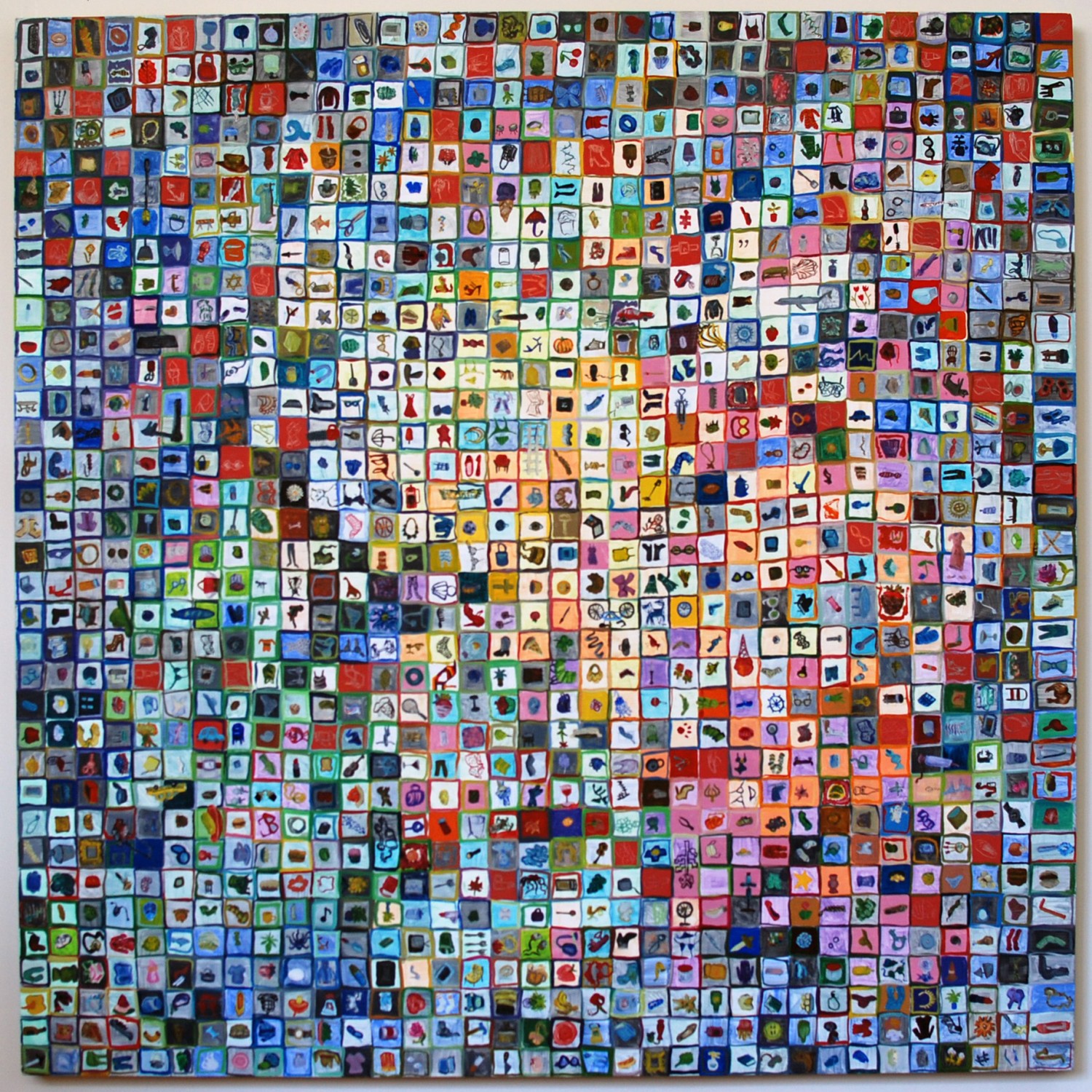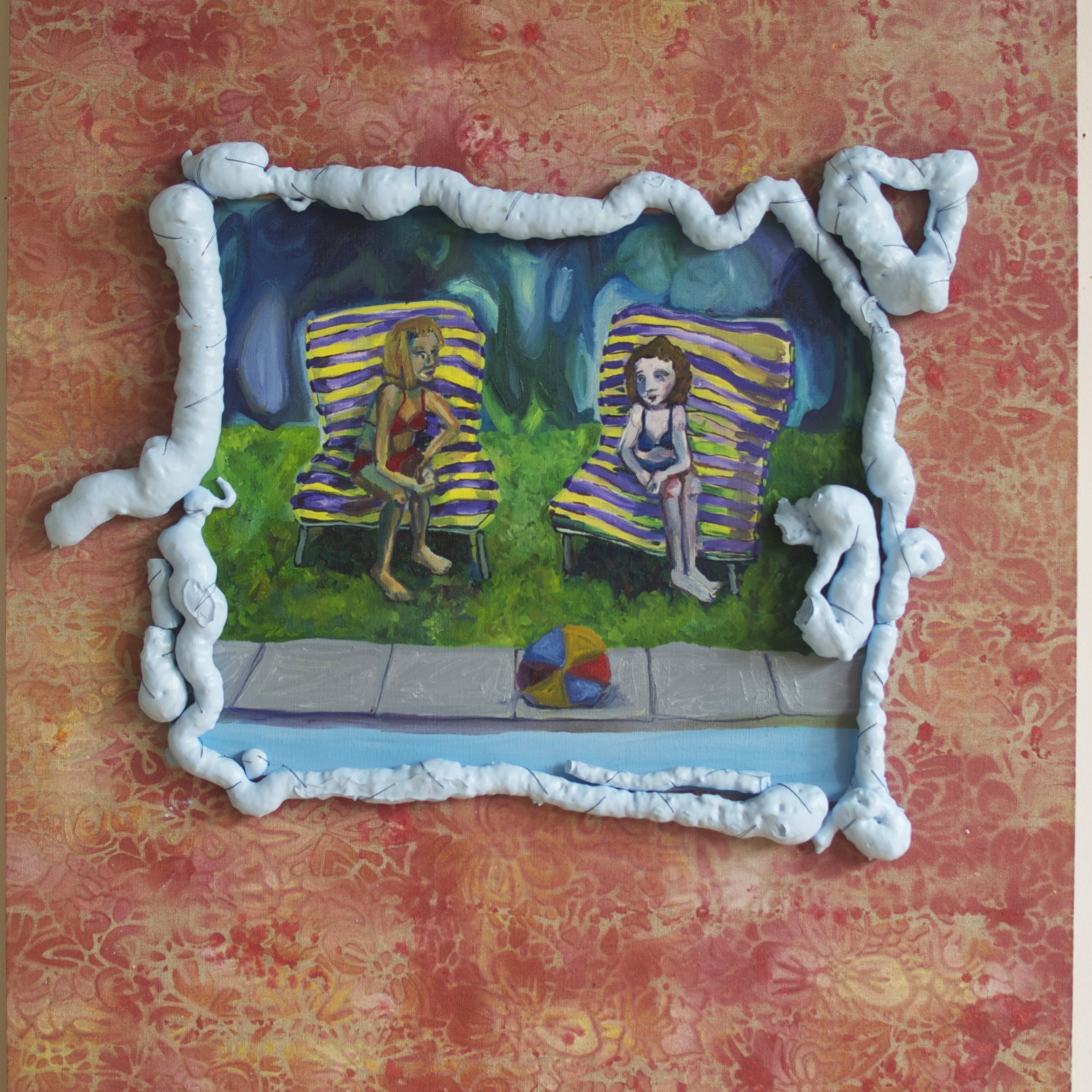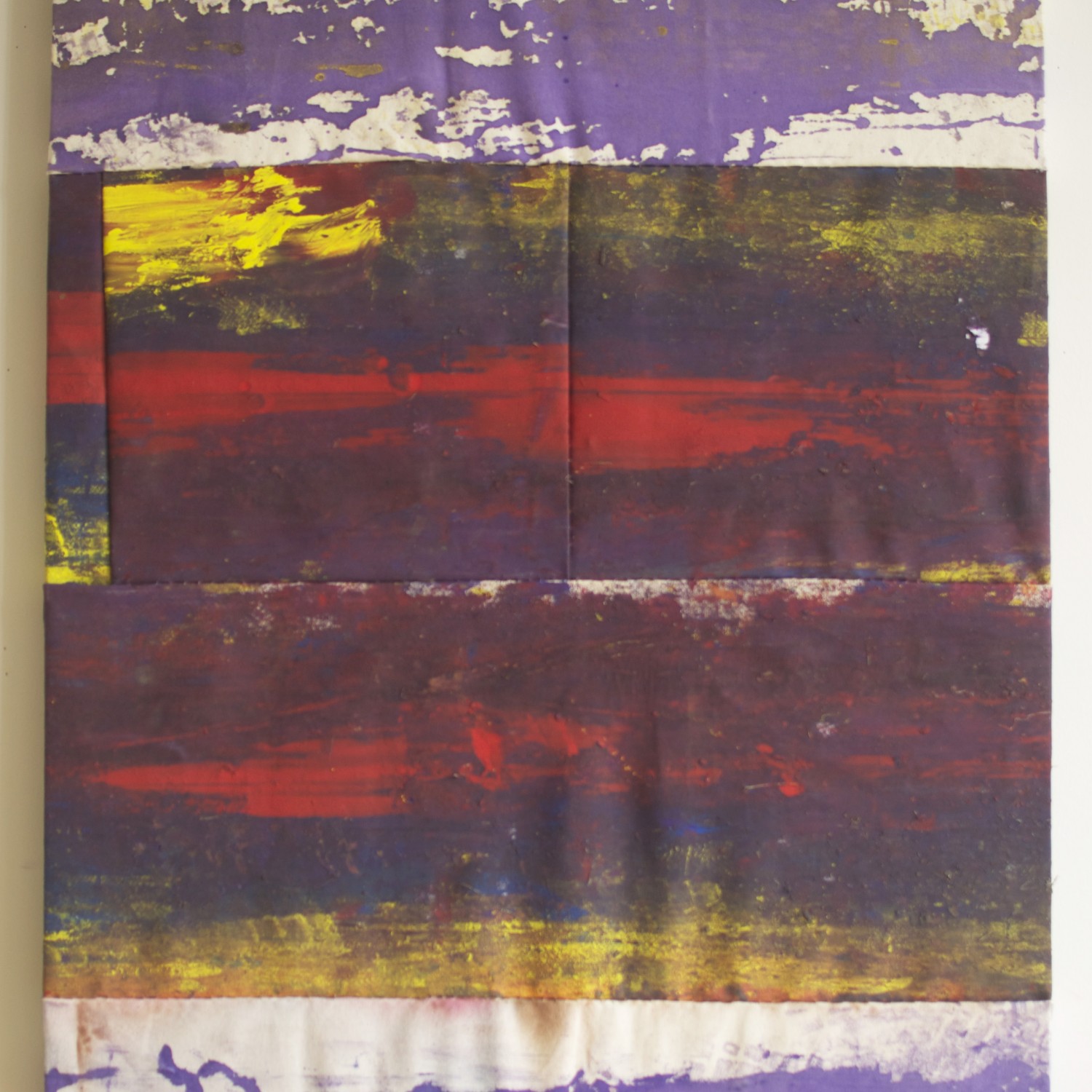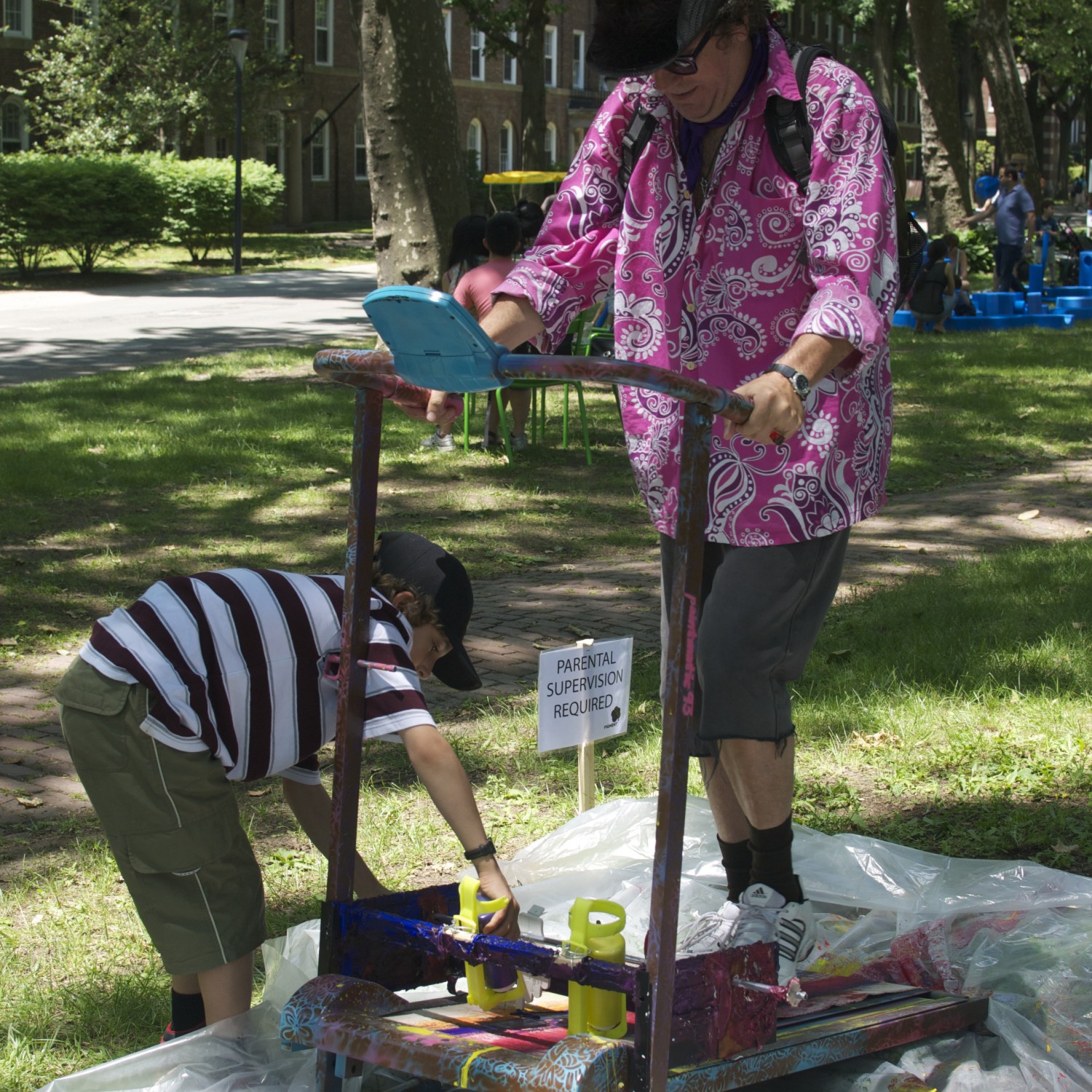Beth Fiedorek: Painting from the Inside Out
Beth Fiedorek has been creating psychological narrative paintings and performance based work since 2007. Fiedorek who is a graduate of Yale, tackles issues surrounding everyday experiences while also commenting on “the improvement oriented culture” we live in within her art. Beth’s introspective and insightful approach to the art making process adds a level of complexity to the work she is generating. Fiedorek who has lived in Brooklyn since 2012, has taken part in the Gowanus Open Studios as well as performing in festivals such as FIGMENT, which occurred this past June.
I recently spoke with Fiedorek about her art making process, what some of the challenges she has faced as a working artist have been and her take on the Brooklyn arts scene.

Anni Irish: How did you get interested in art?
Beth Fiedorek: I always liked making things, ever since I was really young. I have found that materials tend to speak to me, sometimes more so than people which can prove to be awkward.
As I’ve gotten older, making art has become more about communicating and processing experiences. Figuration and materials carry symbolic energy that I try to use thoughtfully, highlighting strange moments I find intriguing. In painting, there are psychological narratives that emerge over time and it is not always something you can control. For me, the process and re-evaluation of materials are deeply important for civilization precisely because of this impulse to publicly yet introspectively reflect on what you feel using the physical matter at hand . But I also find the seriousness of this purpose is not something a painter can think about all the time while making the work.
A.I.: While doing your undergrad at Yale, how did you decide on painting as your concentration?
B.F.: The painters were the most fun and their critiques were always unpredictable and weird. Painting is intimate because of the combination of physicality and isolation. You are experiencing the process alone, but you also can’t hide, and I have always liked that.
A.I.: Because the art scene has evolved so much in even the last fifteen years and with this push to now have an interdisciplinary/mixed media approach to work, what do you think that has done in terms of labeling yourself as a particular kind of artist? Do you think that is limiting on some level?
B.F.: The interdisciplinary element of much contemporary practice is very different from how I was trained, but I think it is important. I am not sure if it is beneficial and I am still deciding how I feel about it because I am not sure where this will end up. If all artists ended up making work like Chris Burden in say his now infamous 1971 piece Shoot, the interdisciplinary push might not be as beneficial.
However, I am grateful that I am able to pursue transmedia projects, both for the projects themselves and because these can inform the way I approach traditional media. I do not think it is limiting, but the disparity between the vagueness of being an “artist” versus the specificity of making a successful artwork can be challenging. Anything is possible, which means that individual’s focus is very important. I think this echoes the ambivalence of modern living in general–you could conceive it as a rubber band mentality.
A.I.: How would you describe your studio practice?
B.F.: Painting as performance, with psychology.

A.I.: That’s interesting, where does the performative element come in for you? In the physical painting process or somewhere else, like in your performance piece Paintmatic?
B.F.: Definitely both. There’s a rhythmic energy to making paintings that is very performative, though not in the same way as traditional forms of performance like dance or theater. I also pay a lot of attention to how bodies — my own and those of other peoples — react to my paintings. To me this is a kind of bodily communication which is linked to performance.
Paintmatic,Performance documentation from June 7, 2014. Image courtesy of Beth Fiedorek.
A.I.: As an emerging artist in the Brooklyn area, what do you think some of the greatest challenges are that you have faced but also for other artists in similar situations?
B.F.: Time and money. Most often, time is a function of money as artists are so busy working to pay their bills and pay for their supplies that there’s very little time left for making the work. Affordable studio spaces are increasingly rare. I get angry about this because one of the reasons that New York is a desirable place to live is the vibrancy of the culture, the striving, visionary living, and the art scene.
I would encourage the people who make a little extra money to carve out some to support the lovable weirdos chasing the collective subconscious. There are lot of really good artists who are leaving New York, and there will be more. It is really a shame.
A.I.: Do you think there are any artist based models that are in play or cold be enacted, that could possibly remedy this?
B.F.: That’s tough. It used to be that commissions for the Works Progress Administration could carry an artist through the early stages of a career, but today’s public arts funding is at historically low levels. This probably has mixed outcomes, and ultimately artists need to self-advocate. A good example is Maya Hayuk pursuing legal action against the megabrands who have used her work for profit without remuneration. W.A.G.E. (Working Artists for the Greater Economy) is a group doing very interesting research surrounding this topic that could help to change the way people thing about these very issues.
A.I.: What are some books, artists or critics you are currently reading?
B.F.: I’ve been reading about Yvonne Rainer. Because I started making figurative paintings, and because I had this treadmill which was kind of a performance, I thought “I should really get into dance.” I took a series at the Mark Morris Dance School in Fort Greene. It was great! I’ve been reading Carrie Lambert-Beatty’s book, Being Watched, which I really love for the title and for the way dance is related to other post-1950s art such as Fluxus. Through Lambert-Beatty, the dances might in some ways start with the politics of spectactorship but are ultimately about banality, documentation and the shared structure of daily life. A combination such as that sticks with you.
Sharon Butler’s blog on painting, Two Coats of Paint is great. She is a painter and her perspective is broad, but also intelligent, with a sense of humor. I’ve also become interested in the artist Lucio Fontana, recently but that might be a religious thing, so let’s not get into it.
A.I.: Given the way the arts have exploded in Brooklyn in recent years, how would you characterize the fine arts within this larger movement?
B.F.: Interesting question! I think the fine arts field is really hard to categorize because individual practices can be so different. Also, especially given the interdisciplinary element, there can be a lot of overlap between the fine arts and other fields. There are a lot of people who make music and also make drawings or paintings; there are a lot of fine artists who also are in bands or performance groups.
That said, to me fine art seems to have always been a relatively small, tight-knit and welcoming, vaguely grumpy place. This is compared to something like experimental music or dance, which aren’t focused on inert materials, and require an audience and a performance and the whole formal setup along with a degree of explicit positivity. It’s possible that fine artists band together readily because we work alone. There are numerous interesting studio collectives and new spaces in Brooklyn run by fine artists — DEAD SPACE and Tiger Strikes Asteroid, a Philadelphia transplant, comes to mind. Maybe fine artists need this receptiveness to each other as a balance to our usual fragmentation.

A.I.: What are some current projects you are working on?
B.F.: I’m gearing up to start a few large figurative paintings that move beyond the technology-focused imagery I’ve been using for the last couple years. There will also need to be some postcursor to Paintmatic, my treadmill that makes paintings. I’m excited!
To Learn more about Beth’s work check out her website and be sure to follow her on twitter.
—Anni Irish


